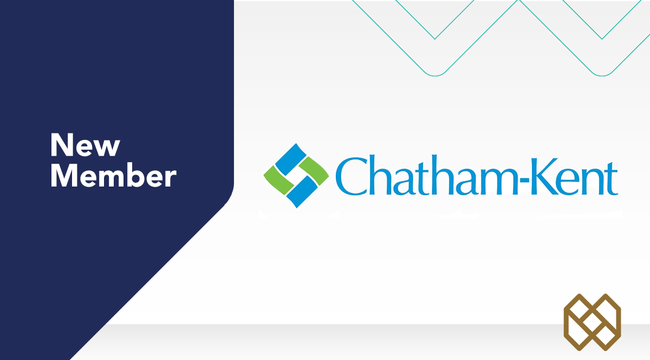HealthPRO Canada News
January 25, 2022
Want to survive a big transformation? HealthPRO Board member Mark Anderson says use every method possible to keep the information flowing

Mark Anderson has overseen major transformations, including being part of the team that moved Saskatchewan’s 12 regional health authorities into one. The CEO of 3sHealth drew on lessons from that experience to ensure 3sHealth could remain nimble and support the response in the province during the pandemic.
___________________________________________________________
Mark, one of the areas you specialize in is healthcare transformation. You were part of the team that developed plans for the transition of Saskatchewan’s 12 former regional health authorities into the one Saskatchewan Health Authority. What opportunities for transformation has COVID-19 brought to light?
I think my first observation is that everybody is doing the best they can given really difficult circumstances. What the pandemic has done is exposed some natural weaknesses in our system and forced us to address them in more expedited timeframes than we otherwise would have. Labour mobility and labour pool creation, for example – in the past, we didn’t have the flexibility for moving the workforce around to meet demand. But it had to happen during the pandemic because you never knew where outbreaks were going to pop up and where you needed support.
We've been forced into more virtual-type technologies more quickly, which has been a positive thing, but we've known we needed to do that for quite some time. We were just dabbling in virtual visits with physicians and that’s really picked up steam.
As you were going through it, did you see parallels in terms of the structures and processes that you've used through some of the transitions and transformations that 3sHealth has done?
Yes, there certainly was. We used a lot of lean methodology, which we now call our Saskatchewan Healthcare Management System, to get down to root cause analysis and bring our teams together with daily visual management. We leveraged our “wall walks,” where leaders get together and review targets for corporate priorities as well as each of our service lines. Before COVID, people from each area would stand at the wall where their metrics were posted and report out on their results. They’re now done virtually using WebEx and OneNote.
Then we pushed those wall walks down to daily huddles across the entire organization and our partners in the Saskatchewan health system used them so information could flow up and down.
Some of the tools we used during specific transformation projects really helped during COVID – in particular, they ensured people had visibility into where the issues were, and that the information was flowing where it needed to go. These structures were essential in letting people know how to perform their unique part in the pandemic response.
How has 3sHealth been affected by the worldwide upheaval in our supply chain?
We put contracts in place for the Saskatchewan healthcare system and so we have definitely experienced shortages and stockouts. We work with a linen provider to deliver linen services to the majority of healthcare facilities in the province. We discovered we had a mixture of reusable linens that get laundered as well as disposable linens, and the disposable linen supply was really drying up for a period of time. So, we had to quickly convert about 60 facilities over to a reusable linen, which impacted our trucking and transport, and the flow of the product. It was pretty unnerving for a period of time.
We were also supporting the Health Authority and its ramp up of PPE. It’s stabilized to an extent now and part of that is because we've been able to create a significant stockpile and inventory in a lot of categories that give us that buffer.
HealthPRO was an active participant in the shift during the pandemic to using different channels for procurement and building up supply. For 3sHealth, was there a complete shift in your mindset in terms of developing more global contacts and having more inventory?
We don't hold the inventory, the Health Authority does, but we partner with them to procure it. The real landscape shift was that suddenly not just the healthcare sector needed some of these supplies, but the entire provincial economy. Affiliate organizations, like long-term-care-type facilities needed inventory, and the Saskatchewan public safety agency was looking for supplies for firefighters and police. We had to find a way to help support all those organizations.
The federal government got involved in procurement for specific types of categories and a government procurement organization in Saskatchewan started doing procurement outside of healthcare. The landscape of who was involved expanded quite significantly.
In reading your bio, it’s clear that you have a ‘coaching style’ of leadership with a dedication to bringing out the best in your people. What’s your best advice for other leaders on creating strong teams?
I think part of our job as leaders and creating strong teams is making sure that folks have the connections they need to build strong relationships with one another. One of the things we talk a lot about is, "Assume the best of one another." But when you’re under pressure and something doesn't go the way you want it to go, it's easy to say, "I did my part. Why didn't somebody else do theirs?" We need to give each other the room to understand that things happen.
I think it's critically important that leaders create, even in this environment, social interactions where people can get to know one another at a personal level because it changes your view and perspective of who they are. So, we've done things like virtual coffee breaks and virtual team get-togethers where we play online games.
Another thing is to be really self-aware of how you are feeling. You want to make sure you're modeling the behaviours you want to see. I often go back to, "What are my values, and who do I want to be as a leader? Am I demonstrating those today?" And if you're not, you try and course correct. You might need to step away for an hour.
Lastly, I say, ask good questions. If something doesn't seem to fit, ask questions. Sometimes there’s something behind it that they're maybe not articulating well. And other times it just helps them think about things differently and actually change an approach.
How do you unwind when you’re not working?
I have a 12-year-old daughter and 10-year-old son. I just finished coaching the flag football season for my son, and now I'm helping coach my daughter's ringette. My son plays hockey. So yes, I’m always doing the dad stuff, which is lots of fun. It’s nice to be able to turn off the work and turn on the coach. I also try and do outside activities as much as possible. Our summers are short, but Saskatchewan is a great place to enjoy the outdoors.
What makes the mission of HealthPRO meaningful to you?
I think the work HealthPRO does is really important. HealthPRO is the integrator that brings hospitals together for their purchasing and then leverages that buying power. The focus has traditionally been on efficiency and making sure we're leveraging the best value, but I think there are opportunities now to really influence manufacturers to do more in Canada and make sure we have a secure supply chain. When we think about what's going on out there in the world and what we've seen, HealthPRO is uniquely positioned to be a strong voice in the national landscape.


